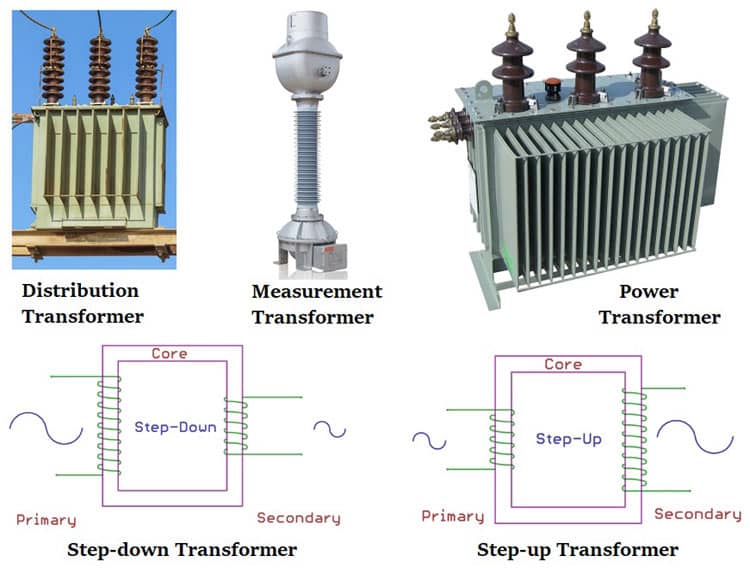Transformer in Depth Explain: The Complete Guide
Transformers are electrical devices that are used for the transfer of electrical energy from one circuit to another. They are essential in the distribution of electricity to homes and businesses. In this article, we will dive into the workings of transformers, exploring their structure, function, and applications.
Table of Contents
- Introduction
- What is a Transformer?
- How does a Transformer work?
- Electromagnetic Induction
- Transformer Parts
- Step-Up and Step-Down Transformers
- Types of Transformers
- Power Transformers
- Distribution Transformers
- Instrument Transformers
- Transformer Applications
- Power Generation
- Transmission and Distribution
- Industrial Applications
- Transformer Maintenance and Testing
- Advancements in Transformer Technology
- Advantages and Disadvantages of Transformers
- Conclusion
- FAQs
Introduction
Transformers are a vital component in the generation, transmission, and distribution of electricity. They are used to step up or step down the voltage in a circuit, which enables the efficient transfer of electrical energy. They are found in power stations, substations, and electrical appliances, and have become an essential part of modern life.
In this article, we will take an in-depth look at transformers, exploring their structure, function, and applications. We will also discuss the different types of transformers, their advantages and disadvantages, and advancements in transformer technology.
What is a Transformer?
A transformer is an electrical device that is used to transfer electrical energy from one circuit to another. It consists of two coils of wire, known as the primary and secondary coils, which are wrapped around a magnetic core. The primary coil is connected to the power source, while the secondary coil is connected to the load.
How does a Transformer work?
Electromagnetic Induction
Transformers work on the principle of electromagnetic induction. When an alternating current flows through the primary coil, it creates a magnetic field around the coil. This magnetic field then induces an alternating current in the secondary coil, which is connected to the load.
The amount of voltage induced in the secondary coil depends on the number of turns in the coils and the strength of the magnetic field. If the secondary coil has more turns than the primary coil, the transformer is known as a step-up transformer, and it increases the voltage. If the secondary coil has fewer turns than the primary coil, the transformer is known as a step-down transformer, and it decreases the voltage.
Transformer Parts
Transformers consist of several parts, including the core, primary coil, secondary coil, and insulation. The core is usually made of laminated steel and provides a low reluctance path for the magnetic flux. The primary coil is wound around the core and is connected to the power source. The secondary coil is also wound around the core and is connected to the load. Insulation is used to prevent the coils from touching each other and short-circuiting.
Step-Up and Step-Down Transformers
Transformers can be either step-up or step-down transformers, depending on the number of turns in the coils. A step-up transformer increases the voltage, while a step-down transformer decreases the voltage. Step-up transformers are used in power stations to increase the voltage for transmission, while step-down transformers are used in homes and businesses to decrease the voltage for use in appliances.
Types of Transformers
There are three main types of transformers: power transformers, distribution transformers, and instrument transformers.
Distribution Transformers
Distribution transformers are used to step down the voltage from the transmission lines to a lower voltage that is suitable for use in homes and businesses. They are smaller than power transformers and are usually mounted on poles or placed on the ground in a metal housing.
Instrument Transformers
Instrument transformers are used to measure electrical quantities such as voltage and current. They are used in electrical meters and protective relays to ensure the safe and efficient operation of the electrical system.
Transformer Applications
Transformers have many applications in the generation, transmission, and distribution of electrical energy.
Power Generation
Power transformers are used in power stations to step up the voltage for transmission over long distances. They enable the efficient transfer of electrical energy from the power station to the load.
Transmission and Distribution
Distribution transformers are used to step down the voltage from the transmission lines to a lower voltage that is suitable for use in homes and businesses. They ensure that electrical energy is efficiently distributed to the end-users.
Industrial Applications
Transformers are used in industrial applications, such as welding machines, cranes, and other heavy equipment. They enable the efficient transfer of electrical energy to power these machines.
Transformer Maintenance and Testing
Transformers require regular maintenance and testing to ensure their safe and efficient operation. This includes checking the insulation, oil levels, and connections, as well as performing electrical tests to measure the transformer’s performance.
Advancements in Transformer Technology
Advancements in transformer technology have led to the development of more efficient and reliable transformers. These advancements include the use of new materials, such as amorphous metal, and the development of new designs, such as the coreless transformer.
Advantages and Disadvantages of Transformers
Transformers have many advantages, such as the efficient transfer of electrical energy and the ability to step up or step down the voltage. However, they also have some disadvantages, such as the generation of heat and noise, and the potential for oil leaks.
Conclusion
Transformers are essential components in the generation, transmission, and distribution of electrical energy. They enable the efficient transfer of electrical energy and ensure that electricity is safely and efficiently distributed to homes and businesses. Regular maintenance and testing are required to ensure their safe and efficient operation, and advancements in transformer technology continue to improve their efficiency and reliability.

Preston Poole